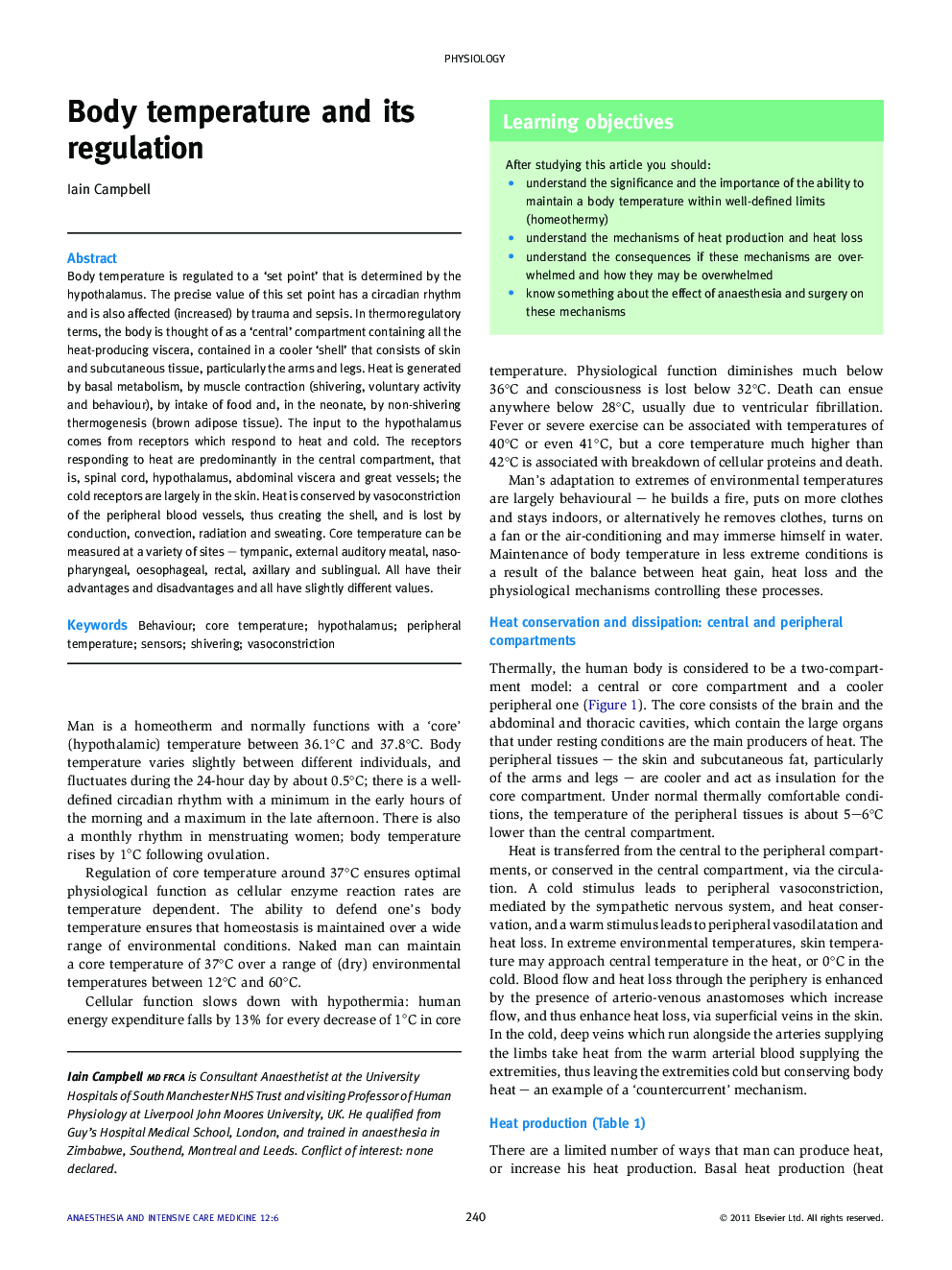| Article ID | Journal | Published Year | Pages | File Type |
|---|---|---|---|---|
| 2742666 | Anaesthesia & Intensive Care Medicine | 2011 | 5 Pages |
Body temperature is regulated to a ‘set point’ that is determined by the hypothalamus. The precise value of this set point has a circadian rhythm and is also affected (increased) by trauma and sepsis. In thermoregulatory terms, the body is thought of as a ‘central’ compartment containing all the heat-producing viscera, contained in a cooler ‘shell’ that consists of skin and subcutaneous tissue, particularly the arms and legs. Heat is generated by basal metabolism, by muscle contraction (shivering, voluntary activity and behaviour), by intake of food and, in the neonate, by non-shivering thermogenesis (brown adipose tissue). The input to the hypothalamus comes from receptors which respond to heat and cold. The receptors responding to heat are predominantly in the central compartment, that is, spinal cord, hypothalamus, abdominal viscera and great vessels; the cold receptors are largely in the skin. Heat is conserved by vasoconstriction of the peripheral blood vessels, thus creating the shell, and is lost by conduction, convection, radiation and sweating. Core temperature can be measured at a variety of sites – tympanic, external auditory meatal, nasopharyngeal, oesophageal, rectal, axillary and sublingual. All have their advantages and disadvantages and all have slightly different values.
